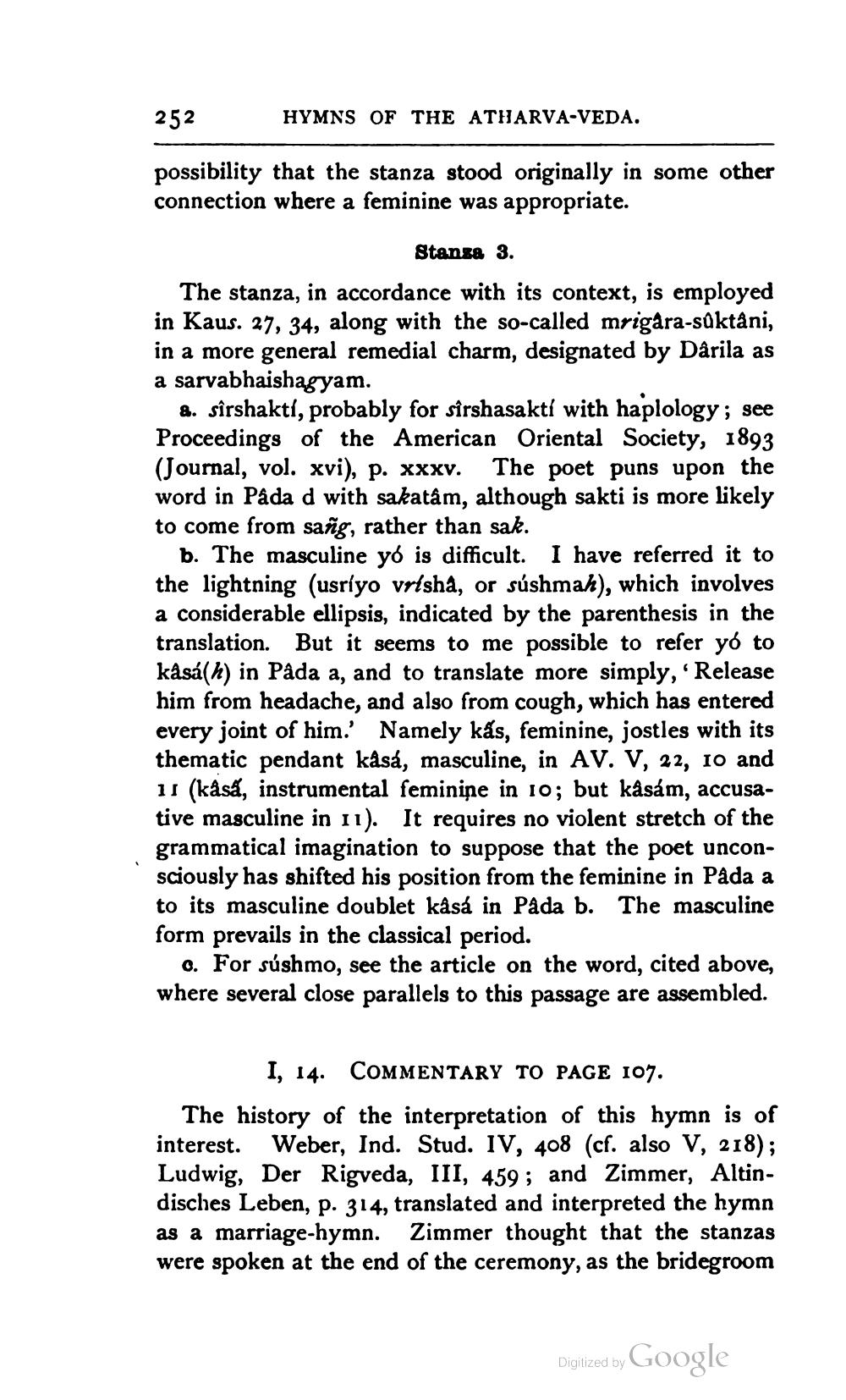________________
252
HYMNS OF THE ATHARVA-VEDA.
possibility that the stanza stood originally in some other connection where a feminine was appropriate.
Stanza 3.
The stanza, in accordance with its context, is employed in Kaus. 27, 34, along with the so-called mrigâra-sûktâni, in a more general remedial charm, designated by Dârila as a sarvabhaishagyam.
a. sîrshakti, probably for sîrshasakti with haplology; see Proceedings of the American Oriental Society, 1893 (Journal, vol. xvi), p. xxxv. The poet puns upon the word in Pâda d with sakatâm, although sakti is more likely to come from sang, rather than sak.
b. The masculine yó is difficult. I have referred it to the lightning (usriyo vrisha, or súshmah), which involves a considerable ellipsis, indicated by the parenthesis in the translation. But it seems to me possible to refer yó to kâsá(k) in Pâda a, and to translate more simply, 'Release him from headache, and also from cough, which has entered every joint of him.' Namely kás, feminine, jostles with its thematic pendant kâsá, masculine, in AV. V, 22, 10 and 11 (kâsa, instrumental feminine in 10; but kâsám, accusative masculine in 11). It requires no violent stretch of the grammatical imagination to suppose that the poet unconsciously has shifted his position from the feminine in Pâda a to its masculine doublet kâsá in Pâda b. The masculine form prevails in the classical period.
c. For súshmo, see the article on the word, cited above, where several close parallels to this passage are assembled.
I, 14. COMMENTARY TO PAGE 107.
The history of the interpretation of this hymn is of interest. Weber, Ind. Stud. IV, 408 (cf. also V, 218); Ludwig, Der Rigveda, III, 459; and Zimmer, Altindisches Leben, p. 314, translated and interpreted the hymn as a marriage-hymn. Zimmer thought that the stanzas were spoken at the end of the ceremony, as the bridegroom
Digitized by
Google




